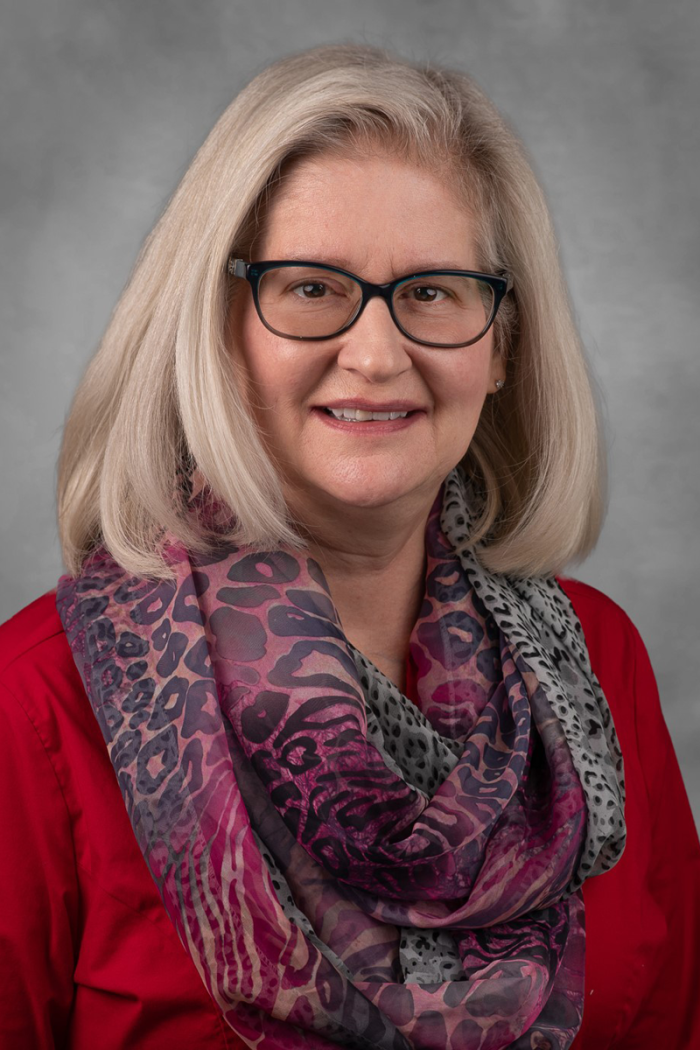Christine M. Thomas

Christine M. Thomas
Ph.D., RN, CHSE-A
Director, Simulation and Experiential Learning
Clinical Associate Professor
Contact:
Christine M. Thomas is the director of simulation and experiential learning. She comes from West Chester University of Pennsylvania where she developed the Nursing Department undergraduate simulation curriculum and two popular undergraduate simulation elective courses. She mentored faculty in the College of Health Sciences in the use of simulation in various departments, and collaborated with faculty to develop Inter-professional education simulation experiences.
Dr. Thomas earned her Healthcare Simulation Educators-Advanced certification in 2020. She designed and conducts faculty development workshops on the topic of simulation best practices nationally for National League for Nursing/Laerdal Medical. Her areas of interest include experiential learning methods, curriculum design and evaluation methods.
- Widener University – Doctor of Philosophy, Emphasis in Nursing Education, Theory and Research (2004)
- Indiana University – Master of Science in Nursing, Specializing in Nursing Education/Adult Health (1996)
- DeSales University – Bachelor of Science in Nursing (1987)
Publications
- Kaulback, M., Bileth, D., Barker, N., Thomas, C.M., Wharry, A., & Park-Clinton, E. (In press). Prelicensure nursing student perception of observed structured clinical examinations to assess intravenous medication administration competency. Teaching and Learning in Nursing. https://doi.org/10.1016/j.teln.2024.12.010
- Thomas, C. M., Park-Clinton, E., Wharry, A., Kaulback, M., Bileth, D., & Barker, N. (2025). OSCE to assess competency in IV medication administration. Teaching and Learning in Nursing. 20(1), e262-e268. https://doi.org/10.1016/j.teln.2024.11.003
- Presentations
Thomas, C., Wendel, J., & Bowman, V. (2024, November 13). Strategies for expanding your simulation center. [Webinar]. Gaumard Scientific, United States. - Herrman, J., & Thomas, C. (2024, November 6). Fortifying your foundation: Brain-based principles impacting simulation learning. [Webinar]. Wolters Kluwer, United States.
- Thomas, C. (2024, April 12). Competence Doesn’t Just Happen. [Keynote]. Rho PI Chapter 24th Annual Nursing Research & Scholarship Conference, Shenandoah University, Winchester, VA, United States.
- Bileth, D., Kaulback, M., Barker, N., Thomas, C., Park-Clinton, E., & Wharry, A. (2024, April 12). OSCE Implementation in a Prelicensure Undergraduate Program. WCU Nursing & Xi Delta Research and Evidenced Based Conference. West Chester University, West Chester, PA, United States.
- Thomas, C. (2024, March 22). Curriculum Integration and Faculty Development. [Session]. Simulation Institute at Villanova Fitzpatrick College of Nursing, Villanova, PA, United States.
- Thomas, C., Park-Clinton, E., Wharry, A., Kaulback, M., Bileth, D., & Barker, N. (accepted 11/2024). OSCE to assess competency in IV medication administration. Teaching and Learning in Nursing.
- Rutherford-Hemming, T., Furman, G.E., Thomas, C., & Peterson, K. (2023, January 21). Systematic Review: Workgroup 9, Question 2: Among SPs does an implementation of a psychological and physical safety measure decrease SP health concerns compared to the absence of such measures? [Session]. International Meeting on Simulation in Healthcare, Orlando, FL, United States.
- Thomas, C., Kaulback, M., Barker, N., Wharry, A., Bileth, D., & Park-Clinton, E. (2023, October 10). The Good, the Bad, and the Challenging of OSCEs in Nursing [Workshop]. Philadelphia Area Simulation Consortium. Pennsylvania College of Health Sciences, Lancaster, PA, United States.
- Thomas, C. M., & Barker, N. (2022). Impact of simulation on undergraduate student outcomes. Nurse educator, 47(6), E127-E131. DOI: 10.1097/NNE.0000000000001218
- Thomas, C.M., Yocom, D., Kaulback, M., & Meehan, C.D. (2021). Using simulation evaluation for prelicensure nursing program review. Nurse Educator, 46(1),34-38. doi: 10.1097/NNE.0000000000000860
- Davidson, P., Heinerichs, S., Reed, M., Grillo, E., Thomas, C., Sankaran, G., Curtis, N., & Bean N. (2019). Students’ knowledge and attitudes: An Interprofessional education workshop and experience. International Journal of Health Sciences Education, 6(1). Available at: https://dc.etsu.edu/ijhse/vol6/iss1/3
- Muckler, V.C. & Thomas, C. (2019). Exploring Suspension of Disbelief among Graduate and Undergraduate Nursing Students. Clinical Simulation in Nursing, 35, 25-32.
- Thomas, C., & Barker, N. (2018). Simulation elective: A novel approach to using simulation for learning. Clinical Simulation in Nursing, 23, 21-29. https://doi.org/10.1016/j.ecns.2018.08.003.
- Thomas, C., & Mraz, M. (2017). Exploration into how simulation can effect new graduate transition. Clinical Simulation in Nursing, 13(10), 465-470.
- Thomas, C., & Kellgren, M. (2017). Extrapolation of Benner’s novice to expert model: An application for simulation facilitators. Nursing Science Quarterly, 30(3), 227-234.
- Thomas, C., Sievers, L.D., Kellgren, M., Manning, S., Rojas, D., & Gamblian, V. (2015). Developing a theory based simulation educator resource. Nursing Education Perspectives, 36(5), 340-342.
- Davidson, P., Heinerichs, S., Reed, M.A., Grillo, E.U., Thomas, C.M., Sankaran, G., Curtis, N., Bean, N., & Holt, H.R. (submitted 1/2018). Students' knowledge and attitudes: An interprofessional education workshop and experience. International Journal of Health Sciences Education.
- Mraz, M., Thomas, C.M., & Rajcan, L. (accepted 5/1/18). Intramuscular Injection CLIMAT Pathway: A Clinical Practice Guideline. British Journal of Nursing.
- Thomas, C., & Mraz, M. (2017). Exploration into how simulation can effect new graduate transition. Clinical Simulation in Nursing, 13(10), 465-470.
- Thomas, C., & Kellgren, M. (2017). Extrapolation of Benner's novice to expert model: An application for simulation facilitators. Nursing Science Quarterly, 30(3), 227-234.
- Grillo, E.U., & Thomas, C. (2016). Using high-fidelity simulation to facilitate graduate student clinical learning. Perspectives of the ASHA Special Interest Groups, 1 (SIG 10), 4-15. doi:10.1044/persp1.SIG10.4
- Thomas, C., Sievers, L.D., Kellgren, M., Manning, S., Rojas, D., & Gamblian, V. (2015). Developing a theory based simulation educator resource. Nursing Education Perspectives, 36(5), 340-342.
- Thomas, C., Mraz, M., & Rajcan, L. (2015). Blood aspiration during IM injection. Clinical Nursing Research. 1-11 doi:10.1177/1054773815575074
- Thomas, C., & Mraz, M. (2013). Designing a medication cart and computerized chart on a budget. CIN: Computers, Informatics, Nursing: CIN Plus. 31(6), 251-254.
- Society for Simulation in Healthcare (SSH)
- International Nursing Association for Clinical Simulation and Learning (INACSL)
- Philadelphia Simulation Consortium
- American Nurses Association (ANA)
- National League for Nursing (NLN)
- Sigma Theta Tau International Nursing Honor Society
- Health Care Simulation

